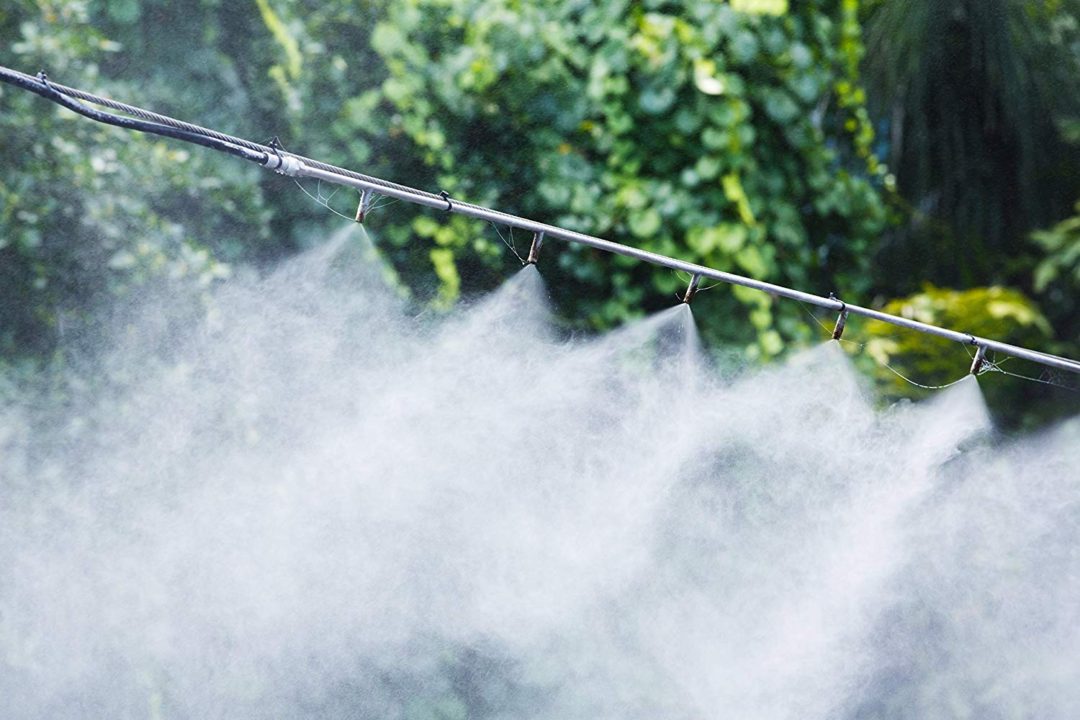The objective of soil moisture management is not merely the conservation of water, but the effective, economical and responsible utilisation of water. Problems arise when we over water or under water.
Irrigation systems have a reputation of wasting water but through correct design and application, different combinations of irrigation systems within a garden, vegetable patch or orchard will actually assist in saving water.
Some tips to follow when planning watering and irrigation:

When to water: (a) Late evening or early morning is best. Avoid mid-day irrigation which usually results in loss of water through evaporation. (b) Lawns are best watered in the mornings to help prevent disease.
Don’t start watering programs too early in the spring. Plants will normally only flourish after the first good rains. Rather spend time improving soil and top dressings.
Switch off irrigation before puddling starts.
Water dry spots individually, avoid wasting water by watering a large area with the sprinkler if the intention is just to water a single rose or a small section of grass.

Sprinklers with course, low spray are best. Fine high pressure systems lose water as the droplets can evaporate into the atmosphere. This is often caused by too high water pressure in the line. Make sure your selection of irrigation nozzle suits your pressure.
Water slowly to prevent runoff but long enough to penetrate the root zone. By over watering, water penetrates beyond the reach of the roots, and excess water will run off and be wasted. Experiment to see how far water penetrates within a given period. Then take a slither of soil from the watered area and check the soil moisture or use a moisture meter (tensio meter).
Drip irrigation is very effective when used on vegetables, fruit trees and specimen trees.
Automatic watering systems should be altered according to season, time of day and amount of rain received unless it is connected to an automated tensio meter and or rain check. Never waste water by allowing the automatic system to water when not necessary.
Check all water connections for leaks.
When planting a tree place a water pipe from the base of the tree roots to just above the soil surface. Watering into this pipe will take the water directly to the tree roots and prevent water wastage. Where possible water trees separately and consider digging a shallow trench around the tree to catch and hold water.

Water trees individually giving them a deep drink but less often.
Flowers and vegetables need short, frequent watering, while shrubs and trees need deeper but less frequent watering.
Never water paving. Use a broom to sweep hard surfaces, not a hose.
Avoid using high pressure sprinklers on seedlings as they damage the young plants and waste water.
Over-irrigation leads to poorer quality vegetables and fruit and reduced life-span of trees.
Signs of over-watering include the stem base of the plant is soft and spongy and the roots become weak or diseased. Fruit and vegetables have a short shelf-life. There is soil salination and the absence of subsoil microbe populations. Foliage wilts or leaves turn pale and new growth is weak. Often there is a strong pungent odour. Young shoots appear shrivelled and blackened. The presence of fungal growth and fungus gnats is also a give-away.
